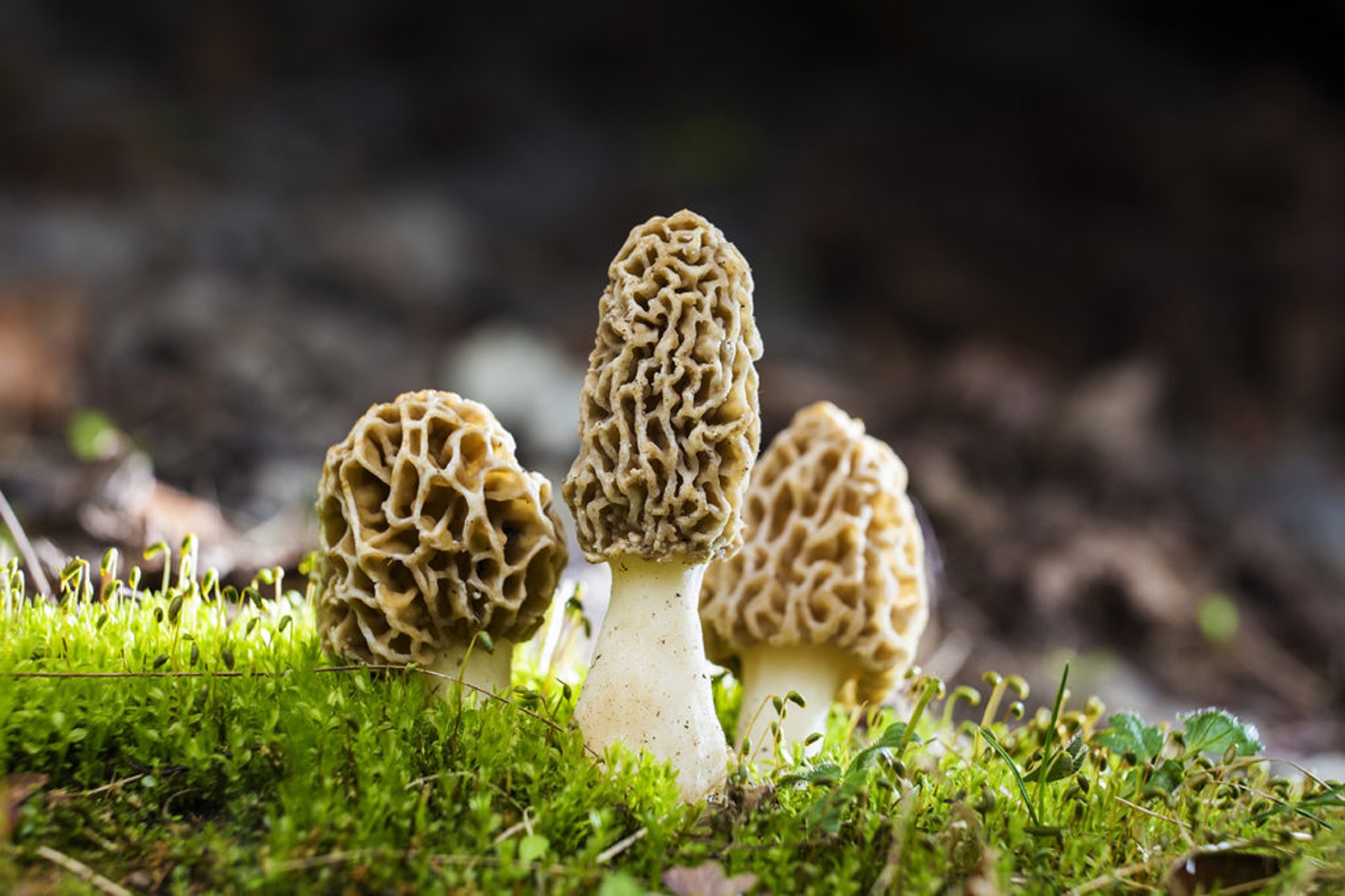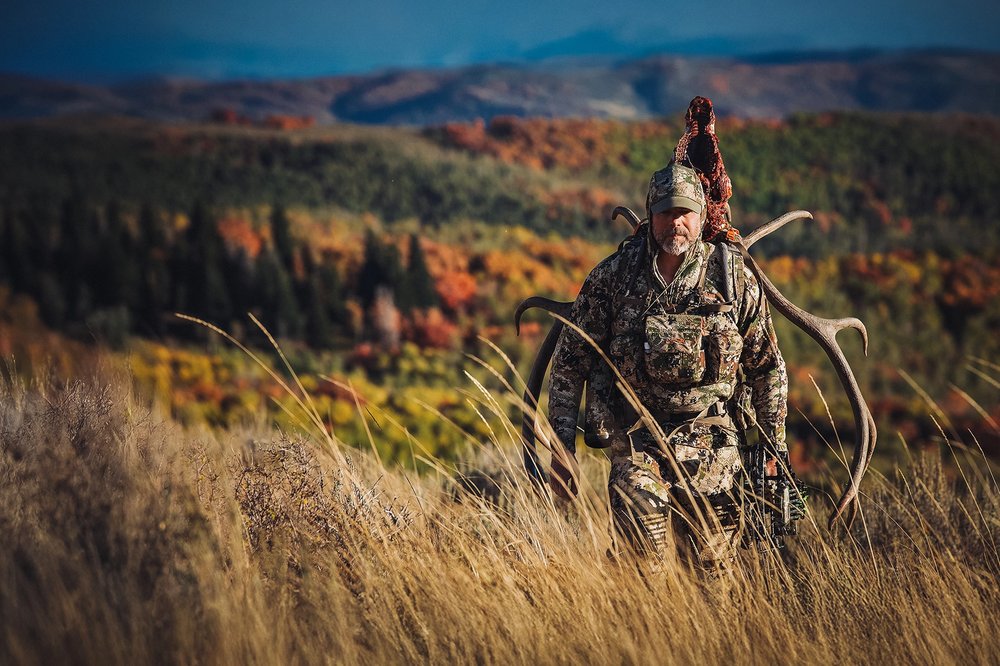Spring Turkey Hunting Tips
Walter Parrott is a revered name among turkey hunters. Parrott is one of the original members of the prestigious Bass Pro RedHead Hunting Team, with three-plus decades under his belt. Equally impressive, Parrott racked up more turkey calling contest wins than anyone from his era. He offered the following tips and tricks from his arsenal:
Be Patient—“Patience is an elemental part of turkey hunting,” Parrott says. “A gobbler can’t read a watch. It is ruled by instinct and caution and will come to, or avoid, your calls based on those qualities. Sit tight on any setup when you get a response from a gobbler. It may show up two hours later.”
Get High—“If at all possible, get to the highest spot around before daylight,” Parrott says. “Being higher than the surrounding terrain will allow you to hear every gobble within range and determine the location. This is a great scouting tactic.
Call Softly—“The latest trends in turkey hunting tout loud, aggressive calling,” Parrott says. “There are times when those tricks work, but it is wise to begin your morning with much less gusto, so you don’t scare them.” Turkeys have excellent hearing. They will hear your soft calls, which is how they begin their day as they awake on the roost.
Back to the Sun—“It’s an ancient trick,” Parrott says. “Always pay attention to where the sun will come up. A gobbler’s eyesight is 10 times better than yours. Do your best to keep the sun in his eyes. On cloudy days, stay in the shade.”
Use Locator Call—“Locator calls often jerk shock gobbles from toms, thus giving away their location,” Parrott says. “An owl call is my favorite. With a little practice, you can make it sound like a coyote, too. Loud coyote calls often keep toms quiet, but the call is much softer from an owl call and sounds much further away. It’s the perfect trick for locating a wise old gobbler.”

Visit National Parks
By Patti Verbanas
Hiking and camping in the spring can be an annual rite of passage: You emerge victorious after a long, cold winter to take on sun-kissed adventures in America’s great wilderness. The National Park Service manages 419 parks covering 85 million acres with over 21,000 combined miles of trails. That’s a lot to explore, so here are some highlights:
Discoveries: Devils Postpile National Monument in California is home to the 101-foot high Rainbow Falls; Cumberland Gap National Historical Park in Tennessee has miles of scenic trails and caves to explore; Isle Royale National Park in Michigan is awash in remote scenic beauty; and Big Bend National Park in Texas sprawls under inky night skies, with rivers that carve temple-like canyons in ancient limestone.
Cool Factor: Get cozy with dinosaur fossils and petroglyphs at Dinosaur National Monument in Colorado and Utah, and the Great Smoky Mountains National Park in North Carolina and Tennessee explodes in color during peak lightning bug-flashing season in late May/mid-June.
Want Rugged?: Truly immerse yourself in the wild with backcountry camping and hiking at parks such as Guadalupe Mountains National Park in Texas and Sleeping Bear Dunes National Lakeshore in Michigan.
Sky’s the Limit: For expansive skies, camp at a “Dark Sky Park,” such as Chaco Culture National Historical Park in New Mexico, Great Basin National Park in Nevada, and Cedar Breaks National Monument in Utah.
Wildlife Spotting: Marmots emerge around April in Rocky Mountain National Park in Colorado; Acadia National Park in Maine is one of the premier bird-watching areas in the country, with a record 338 diverse bird species; and alligator mating season occurs in the spring in Big Cypress National Preserve and Everglades National Park in South Florida.
Kids: The National Park Services’ Every Kid Outdoors allows free admission to public lands for families of fourth graders. The Junior Ranger program teaches kids about protecting parks, and the Junior Ranger Angler program teaches them fishing, aquatic habitats, and fishing safety.
Nicky Pizzo, Appalachian Mountain Club Program Manager, recommends that those new to hiking get involved with a local hiking club, which has experts who can introduce you to trails and teach you outdoors skills. “Before venturing out, check the weather, choose a trail that is suited for your abilities, and prepare for the worst possible conditions,” he says. “Dress in layers, bring waterproof and windproof gear, good hiking shoes, and a hat.” Always let someone know where you are going, he adds, and bring: a map and compass; a quart or two of water; extra food; lighter or matches to build a fire; flashlight; first aid kit with a whistle; knife and duct tape; sunscreen, sunglasses, bug spray, and lip balm; tarp; and extra clothing.
Find a park at nps.gov/findapark.

Mad for Morel Mushrooms
By Patti Verbanas
After a heavy rain, it’s a small thrill to watch mushrooms spring up—as if by magic—populating fields and forests. Spring is a marvelous time to forage for mushrooms: The concentration of finding them puts you in a state of blissful mindfulness, and the rush of discovery is one of life’s purest pleasures.
Before you embark on your foraging adventure, it’s important to know some fundamentals like which mushrooms are safe to eat (many edible varieties have poisonous look-alikes) and how to keep them from spoiling.
“Wildman” Steve Brill, who has been leading mushroom foraging tours for nearly four decades, recommends beginners join a field walk with a mycological association to gain expertise. (You can find a club on the North American Mycological Association website: namyco.org.) “Learn a small number of the most unmistakable species—chicken mushroom, giant puffball, morels, and chanterelle—and check with an expert prior to eating any wild mushrooms that you are unsure about,” he says. The most comprehensive guide is Mushrooms Demystified by David Aurora; The Audubon Society Field Guide to North American Mushrooms by Gary Lincoff is a portable resource to take into the field.
“Morels are considered the best-tasting mushrooms of spring,” Brill says, but notes that there are other delicious types, such as puffballs, which are white and soft inside like cream cheese, and mushrooms that can be substituted for meats due to tastes similar to their namesakes: oyster mushrooms, which have a fishy taste, and chicken mushrooms.
You can best find mushrooms a day or two after a heavy rain, on living or dead trees, and in meadows, fields, and forest floors—but not so much in sandy soil. Brill recommends foraging away from railroads and areas within 50 feet of heavy traffic or highways where mushrooms are likely to be contaminated. Bring a pocket knife to cut mushrooms cleanly and trim off the soil. Once cut, place them in separate paper or wax paper bags, grouped by type and marked accordingly; plastic can make mushrooms spoil. A basket will prevent a large collection from being crushed.
Since mushrooms are perishable, refrigerate and prepare them as soon as possible. Clean them with a soft toothbrush, using as little water as possible to minimize sogginess.
Mushrooms are delicious health powerhouses: low in calories, carbohydrates, fat, and sodium and containing important nutrients, including potassium, vitamin D, proteins, and fiber. Brill recommends that you always cook mushrooms to neutralize toxins, and simmer and steam those with a high water content instead of sautéing. One of his favorite recipes follows:
Baked Morel Casserole
- 2 Tbsp. olive oil
- 4 cups morels or other wild or commercial mushrooms
- 1 bell pepper, finely chopped
- 1 onion, finely chopped
- 2 cloves of garlic, finely chopped
- 11/4 Tbsp. silken tofu, drained
- 1 Tbsp. lime juice
- 1/4 tsp. salt, or to taste
- 1 Tbsp. parsley, finely chopped
- 1/4 tsp. white pepper, ground
- 31/2 cups mashed potatoes (cooked)
- 1 Tbsp. corn oil
- 1/2 Tbsp. lecithin granules
- 2 Tbsp. any wild onion leaves, chives, or scallions, chopped
- Sauté the morels, bell pepper, onions, and garlic in olive oil 5 minutes.
- Stir in silken tofu, lime juice, salt, parsley, and white pepper, reduce the heat to low, and simmer, covered, 5 minutes.
- Meanwhile, mix the corn oil and lecithin granules with the potatoes and put half into an oiled baking dish.
- Put the mushroom layer on top and cover with the remaining potatoes. Garnish with the wild onion leaves.
- Bake, covered, in a preheated 350°F oven 20 minutes.
Serves 6. Preparation time: 20 minutes. Cooking time: 20 minutes.
— Steve Brill, The Wild Vegan Cookbook. More recipes at www.wildmanstevebrill.com.

Deer Shed DIY’s
By John J. Radzwilla
Spring is here, and deer are shedding their antlers. There are few things, with the exception of harvesting a great buck, that are more exciting than finding a shed in the spring. If you’re on the hunt, it is important to keep your eyes open early for sheds. The more time that passes once they are cast off, the chances of critters chewing on the shed increase. Many great sheds have been scarred or even devoured by the teeth of squirrels, opossums, mice, foxes, coyote, beaver, otter, bear, and even other deer. Sheds are a tasty treat for them; packed with important nutrients like calcium and phosphorous.
If you are lucky enough to find a shed, what do you do with it?
Refurbish a knife with an antler handle.
Making your own custom knife is much easier than you think. First, find an old blade and cut the tang to approximately 2 inches. Then, cut a 4- to 5-inch section off of the base of the antler. Placing the cut piece in a vice, carefully drill out or use a Dremel to form a slot for the tang. Next, trim and shave the antler so it pushes flush to the blade’s bolster. Using epoxy, firmly set the blade in the slot you just created. Gently sand the handle to your liking once the glue dries. Finally, carefully sharpen and polish your new knife.
Transform a chandelier for your home.
Creating antler lighting is a challenge, but not nearly as much after you learn this secret. Refurbish or repurpose standard chandeliers. Use metal fixtures to fasten the antlers as well as to shape the overall chandelier structure. First, round up as many sheds as you can (this may take a few seasons). Next, pull down one of your chandeliers or head to your local hardware store and buy one with ample metal sections to which you can attach. The hardest part of the whole process is balancing the fixture. The easiest way is to hang it with an S hook on a chain in your garage to see how each antler affects the balance as you add them on. Attach them initially with wire, and once balanced out, carefully drill pilot holes through the antler into the frame. Finally, use finishing screws to secure them in place, remove the wire, and paint the screw heads with a bone-colored paint. For a bit more style, add turkey feathers and twine accents.




